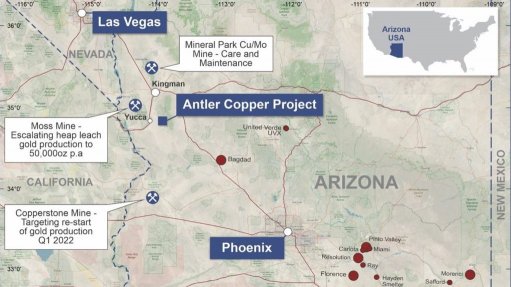Ethiopia to start GERD turbine testing
Ethiopia intends to start testing two turbines at the controversial Grand Ethiopian Renaissance Dam (GERD), after filling the reservoir for the second successive year.
“The second filling of the Renaissance dam has been completed and the water is overflowing,” Ethiopian Water, Irrigation and Energy Minister Seleshi Bekele said this month.
He added that this meant that the dam had amassed enough water to run the two turbines, which have the capacity to produce 750 MW of electricity.
Despite protests from Sudan and Egypt, which lie downstream of the Nile river, Ethiopia had made it clear the target for this year’s rainy season was to add 13.5-billion cubic metres to the reservoir, the holding capacity of which is 74-billion cubic metres.
“The next milestone for GERD construction is to realise early generation in the next few months,” noted Bekele.
The process of filling the dam’s reservoir began last year, with Ethiopia managing to hit its target of 4.9-billion cubic metres of water.
By going ahead with the filling of the dam for the second successive year, Ethiopia has yet again demonstrated its determination to defy the concerns raised by Egypt and Sudan – that the dam will have adverse impacts on the flow of the Nile river, which is the source of 97% of Egypt’s water needs.
Mediation by, among others, the African Union, the United Nations Security Council and the US government have failed to resolve the protracted standoff, and this has escalated tensions in the region, with some fearing that a war could ensue.
When completed, the $4.2-billion dam will be Africa’s largest hydroelectric generator and the world’s seventh-largest dam. It will generate 6 450 MW from its 13 turbines and will be central to Ethiopia’s ambition to provide universal access to electricity for its 110-million-strong population and turn the country into a net exporter of electricity in the wider East African region.
Since it was conceived a decade ago, Egypt and Sudan have been opposed to the project, owing to fears of its impacts on downstream countries that depend on the Nile for water.
The controversial dam is located on the Blue Nile, which is the largest tributary of the Nile river, .
contributing about 85% of the water reaching Egypt, with much of the drainage from Central Africa into the White Nile evaporating in the Sudd swamps.Comments
Press Office
Announcements
What's On
Subscribe to improve your user experience...
Option 1 (equivalent of R125 a month):
Receive a weekly copy of Creamer Media's Engineering News & Mining Weekly magazine
(print copy for those in South Africa and e-magazine for those outside of South Africa)
Receive daily email newsletters
Access to full search results
Access archive of magazine back copies
Access to Projects in Progress
Access to ONE Research Report of your choice in PDF format
Option 2 (equivalent of R375 a month):
All benefits from Option 1
PLUS
Access to Creamer Media's Research Channel Africa for ALL Research Reports, in PDF format, on various industrial and mining sectors
including Electricity; Water; Energy Transition; Hydrogen; Roads, Rail and Ports; Coal; Gold; Platinum; Battery Metals; etc.
Already a subscriber?
Forgotten your password?
Receive weekly copy of Creamer Media's Engineering News & Mining Weekly magazine (print copy for those in South Africa and e-magazine for those outside of South Africa)
➕
Recieve daily email newsletters
➕
Access to full search results
➕
Access archive of magazine back copies
➕
Access to Projects in Progress
➕
Access to ONE Research Report of your choice in PDF format
RESEARCH CHANNEL AFRICA
R4500 (equivalent of R375 a month)
SUBSCRIBEAll benefits from Option 1
➕
Access to Creamer Media's Research Channel Africa for ALL Research Reports on various industrial and mining sectors, in PDF format, including on:
Electricity
➕
Water
➕
Energy Transition
➕
Hydrogen
➕
Roads, Rail and Ports
➕
Coal
➕
Gold
➕
Platinum
➕
Battery Metals
➕
etc.
Receive all benefits from Option 1 or Option 2 delivered to numerous people at your company
➕
Multiple User names and Passwords for simultaneous log-ins
➕
Intranet integration access to all in your organisation

















